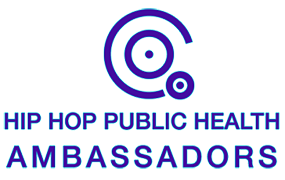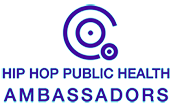The use of chatbot technology in healthcare is transforming the medical industry. These virtual assistants can provide real-time, personalized advice to people with chronic conditions and offer support for those dealing with tough symptoms or mental health issues. Chatbots are also helping patients manage their medication regimen on a day-to-day basis and get extra help from providers remotely through text messages. People do not want to engage in waiting lines or sit by the phone looking out for a response from medical professionals. In this post-pandemic world, healthcare providers have to be more keen-eyed with their approach to customer service.
- For example, it may be almost impossible for a healthcare chatbot to give an accurate diagnosis based on symptoms for complex conditions.
- Many chatbots in the US healthcare industry work as personal health trackers and medication reminders for patients that use them.
- Our in-house team of trained and experienced developers customizes solutions for you as per your business requirements.
- First, it uses simple questions like the patient’s name, contact number, address, symptoms, current doctor, and information regarding insurance.
- This situation arises because chatbots are prone to errors and can sometimes be difficult to implement.
- Medical chatbots can interact with the users to take their queries as input and provide an answer or result accordingly.
The platform delivers information in a responsive, conversational way over email or text. Different chat options, available in English or Spanish, educate patients on the benefits of the test and what to expect before, during and after the procedure. The program also provides date and location reminders as a patient’s appointment draws near. Healthcare provider Providence was the first to make the Coronavirus Self-Checker chatbot available, via its website. The app asks a number of questions based on CDC guidelines and, depending on the answers, gives an option to contact a doctor or participate in a virtual video visit.
Reduced Costs
One of the key uses for healthcare chatbots is data collection about patients. Simple questions like the patient’s name, address, phone number, symptoms, current doctor, and insurance information can be used to gather information by employing healthcare chatbots. The goal at this time is not to fully diagnose patients via virtual assistants but rather to guide patients to the right resources and help healthcare professionals better understand a patient’s needs.
- Liji practiced as a full-time consultant in obstetrics/gynecology in a private hospital for a few years following her graduation.
- However, healthcare providers may not always be available to attend to every need around the clock.
- When the time comes for you to hunt for a chatbot solution for the healthcare industry, locate an experienced provider of healthcare software, such as Remotestate, and have the best option presented to you.
- Healthily is one such chatbot, which can assess symptoms and provide diagnosis.Once you enter the symtopms, the chatbot sends you a report with all the possible causes, and also the next steps in your treatment path.
- However, a programmed system can easily remember thousands of queries with ultimate ease.
- Patients who are disinterested in their healthcare are twice as likely to put off getting the treatment they need.
Almost all of these platforms have vibrant visuals that provide information in the form of texts, buttons, and imagery to make navigation and interaction effortless. For instance, a Level 1 maturity chatbot only provides pre-built responses to clearly-stated questions without the capacity to follow through with any deviations. If you look up articles about flu symptoms on WebMD, for instance, a chatbot may pop up with information about flu treatment and current outbreaks in your area. We use Google Cloud Datastore to set up a highly scalable and cost-effective solution for storing and managing NoSQL data structures.
Step 3: Fuse the best of human and AI
Our platform’s natural language understanding supports more than 20 languages, and the conversation studio allows you to seamlessly translate from one language to the other without creating multiple chatbots. Healthcare providers include healthcare organizations, clinicians, and physicians. Healthcare providers need to identify diseases and analyze a large amount of healthcare information to make critical decisions. For instance, the SafeDrugBot is a chatbot widely used by doctors to find safe drugs that can be administered to pregnant women and mothers that are breastfeeding. Amidst all this, the healthcare app development sector can really benefit from intelligent chatbots. These chatbot healthcare apps can be a great way to minimize the additional burden on professionals.
They may even instruct autistic people on how to improve their social skills and do well in job interviews. Users can communicate with chatbots through text, microphones, and webcams. Chatbots are now increasingly used to analyze a patient’s symptoms and determine their medical condition without requiring them to visit a hospital. No of the range of inputs, creating NLP-based chatbots can assist in interpreting a patient’s needs.
Voice customer support
The healthcare chatbot market is predicted to reach $944.65 million by 2032 from $230.28 million in 2023. Let us find out more about the benefits and use of chatbots in healthcare. Chatbots aren’t meant to replace doctors or nurses, but they will make the whole patient care experience a lot simpler and faster. Your patients will have a 24/7 virtual nurse in their pocket to track and optimize their health journey in real time.
- These are programs designed to obtain users’ interest and initiate conversation using machine learning methods, including natural language processing (NLP).
- AI chatbots are providing mental health support, improving access to care, and reducing stigma.
- Chatbots for customer support in the healthcare industry can boost business productivity without adding any extra people or resources.
- It can perform all those tasks with ease and sometimes with better efficiency and enhanced results.
- It involves understanding how humans communicate with each other through text, speech, pictures, and video.
- Our Microsoft SQL Server-based projects include a BI solution for 200 healthcare centers, the world’s largest PLM software, and an automated underwriting system for the global commercial insurance carrier.
However, this new technology has raised concerns when they are applied to healthcare due to potential issues like bias or discrimination against patients with certain demographics such as race or gender identity. As more and more people become aware of the potential, there are some great examples of how they can help patients. A recent study showed that after chatting with a chatbot on an asthma website, users were able to take a test that would have otherwise been difficult to access. Real time interaction and scalability is important in the time of pandemics, since there is misinformation, and wide spread of the virus. To cope with such a challenge, the government of India worked with conversational AI company Haptik to curate a chatbot to address citizens’ COVID-19 related health questions.
Other End Users
A well built healthcare chatbot with natural language processing (NLP) can understand user intent with the help of sentiment analysis. Based on the understanding of the user input, the bot can recommend appropriate healthcare plans. AI-enabled patient engagement chatbots in healthcare provide prospective and current patients with immediate, specific, and accurate information to improve patient care and services.
Kore.ai Applauded by Frost & Sullivan for Delivering a Scalable and Secure AI-powered Platform that Optimizes the Customer Experience – Yahoo Finance
Kore.ai Applauded by Frost & Sullivan for Delivering a Scalable and Secure AI-powered Platform that Optimizes the Customer Experience.
Posted: Tue, 16 May 2023 17:57:00 GMT [source]
By positioning conversational AI, you can store and extract your patients’ information like name, address, signs and symptoms, current doctor and therapy, and insurance information. Medical virtual assistants have an interactive and easy-to-use interface; metadialog.com this helps create an engaging conversation with your patients and ask them one detail at a time. On the other hand, with an OTP verification system, virtual assistants can ensure that only verified users schedule appointments in your facility.
2 ADA HEALTH
When a patient strikes up a conversation with a medical representative who may appear human but is an intelligent conversational machine. There are many areas where this technology has been used, such as payments, customer support, and marketing. The perfect blend of human assistance and chatbot technology will enable healthcare centers to run efficiently and provide better patient care. Here are different types of healthcare chatbots, along with their templates. While a website can provide information, it may not be able to address all patient queries.
Now that you understand the advantages of chatbots for healthcare, it’s time to look at the various healthcare chatbot use cases. You can build, test and launch your healthcare chatbot from scratch and enjoy up to 50 free conversations so you know your bot is actually engaging your patients. If you’re looking for inspiration, here are a few examples of chatbots successfully providing chatbots in healthcare industry healthcare services today. Mental health chatbots can help fill this gap through cognitive behavioral therapy (CBT). As a result, patients with depression, anxiety, or any other mental health issues can now find a virtual shoulder to lean on. This allows your chatbot to screen patients early and sort out the ones who need urgent care from those who can do with self-care.
Scheduling
It’s partially due to the fact that conversational AI in healthcare is still in its early stages and has a long way to go. More sophisticated chatbot medical assistant solutions will appear as technology for natural language comprehension, and artificial intelligence will be better. One critical insight the healthcare industry has learned through the COVID-19 pandemic is that medical resources are finite. We also know that when patients need help, they don’t want to wait on hold. By leveraging Watson Assistant AI healthcare chatbots, you intelligently focus the attention of skilled medical professionals while empowering patients to quickly help themselves with simple inquiries.
How AI can be useful in healthcare?
By automating mundane tasks, such as data entry, claims processing and appointment scheduling, using artificial intelligence in healthcare can free up time for providers and healthcare organizations to focus on patient care and revenue cycle management.

